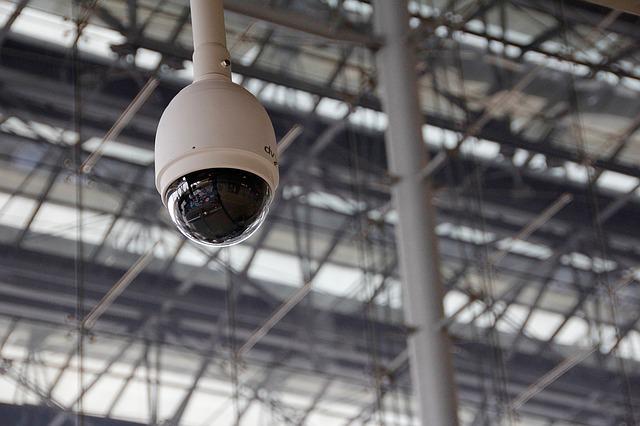
Ring security systems are a wildly popular and highly customizable system that consists of smart home automation, door and window sensors, and equipment for home safety monitoring. They are also simple to install and operate.
Ring Security: Its Working
Ring security systems are built around a network that transmits signals via Wi-Fi. It allows you to remotely monitor your home using a smartphone even if you are not there.
It's always helpful to know when someone is approaching your porch or home. Ring offers indoor and exterior cameras that feature motion detection and sirens as well as two-way conversation capabilities.
It's one of the most affordable systems on the market, with monitoring costs starting at $20 per month or $200 a year (the company has a free plan). That's cheaper than older companies like ADT and Frontpoint, which charge $60 a month for monitoring, but it's still more expensive than other home security options.

A home security kit can include five, eight or fourteen pieces of equipment. The 5-piece kit can be a great starter for a house of small to medium size. This kit comes with different types and sizes of door and/or window sensors, plus a keypad.
If you want a more comprehensive system, you can buy the X Line, which has more than 10 pieces of equipment, including an indoor and outdoor video camera, motion sensor, smart bulb, and key fob. It is slightly more expensive than base kit but comes with additional features.
The X Line can be purchased in standalone units or kits, allowing you to customize your home security. The kits are available in 5, 8, and 14-piece configurations, with the 8-piece model being best suited for small to medium-sized homes.
What You Need to Know About Your Ring Alarm Security Kit
Ring Alarm, unlike most other security systems does not come with an SD card. You will need to purchase one if you want to record video. If you have multiple cameras, the SD card can fill up very quickly, and it's a good idea to delete footage if it's running out.
You should also remove and replace all the AA batteries in your device. You can buy AA-sized batteries at the local grocery or drugstore. They are also available on Amazon.

It can also be handy to have an extra battery pack on hand in case you're away from home or don't want to plug the device in while it's charging.
A key fob can be used to arm your ringing alarm system. It's a great feature because it allows you the option to arm/disarm from a distance.
The ring system is an inexpensive and easy way to secure your home. However, you will not get the maximum benefit from it if you don't have enough time and patience for the installation and maintenance. The systems can be difficult to set up and use, especially if you have a parent who is elderly or disabled.
FAQ
Which home security system is the most feature-rich?
Ring Video Doorbell Pro features the most of any home security system we reviewed. It allows you to see who is at the door, chat with them, and even record videos. It also comes with a free cloud storage service so you can save any recordings you make.
What is the number 1 home security system?
Ring Video Doorbell Pro has been voted the best home security system. You can use your smartphone to talk to and see any person at any time, from anywhere. You can also capture video and send it to family and friends by text message or email.
What is the best home security program?
ADT Pulse (Ring Alarm), Vivint SmartHome Security, Protect America, and Vivint SmartHome Security are the most well-known home security systems.
What price should I pay to have alarm monitoring?
Alarm monitoring costs vary depending on how often you want it monitored, what kind of equipment you need, and whether you are looking at an all-inclusive package or just one monthly fee.
Can ADT hackable?
ADT security system remains one of the most trusted home alarm systems. ADT Home Security System is considered by many to be the best option. Its reputation for being reliable and dedicated to protecting homes against fire and burglary is something they trust.
Hackers can also infiltrate organizations, as with everything, and take down trustworthiness. Hackers are able to infiltrate networks at any moment and steal sensitive information. Hackers can access your network's data and make changes to the software and hardware settings if they succeed infiltrating it. Hackers can, for instance, delete files and change passwords. It's important to understand that just because you cannot see something, doesn't mean hackers aren't trying to get into your house. You need to arm yourself with information on how to keep your systems protected.
Statistics
- Cove sets you free without punishing penalties and fees, unlike other security solutions that charge 75% to 100% of your remaining contract. (safewise.com)
- Most home security companies will charge you around 75% of the remaining term of your contract if you cancel early—and some require 100%.Related questionsWhat type of contract length can I expect from security providers?Home security system cancellation (safewise.com)
- That's probably why Cove has a whopping 98%* customer retention rate. (safewise.com)
- Unlike other online safety services that charge up to 100 percent of your monthly fee, Cove charges no upfront fees and has no hidden costs.
External Links
How To
How to Install an Home Security System
A home security system is a device that monitors your property and alerts you if there's any activity. It could be a motion sensor, doorbell camera, smoke detector, fire alarm, flood alert, carbon monoxide detector, burglar alarm, etc. A home security system typically includes one or more sensors, such as motion detectors. These sensors send signals when they sense movement or sound. The signals are then sent over to a control box where they are monitored and recorded. If there's something wrong, like someone breaking into your house, the control panel sends out an alert to your phone, tablet, computer, or voice assistant. You'll be able to immediately take action and know exactly what's happening.
The first step to installing a home security system is choosing the right type of sensors for your home. There are two main types. Active and passive sensors. Passive sensors do not require batteries. They simply pick up sounds and vibrations around them. They include doorbells, sirens and buzzers. Active sensors transmit data using electricity. These sensors include motion sensors and cameras.
There are many types of sensors on the market today. Each brand comes with its own pros and cons. For instance, some sensors can be weatherproof while others don't. Some include built-in speakers to allow you hear them even when they are outside. Some only work indoors. Others are more complex, while some offer more advanced features like night vision.
Once you have chosen the right type of sensor for your property, it is time to select a manufacturer. This will ensure that your sensors are compatible. Your local hardware store should have plenty of options to choose from.
After choosing a brand of sensors to use, you can decide how many to purchase. Depending on whether you live alone or with your family, most people will start with just one or two sensors. If you are planning to add sensors later on, you may consider purchasing additional sensors.
Next, consider where you want to put your sensors. Are they near windows or doors? Or do you prefer having them hidden away? Before placing them on your property, get permission. Also, make sure they won't interfere with anything else, like electrical outlets.
Once you have determined where your sensors should be placed, you will need to find a way to connect them with your control panel. Depending on your setup you might need to buy a power adapter and/or battery pack. Once everything is in place, you can start to monitor your property.